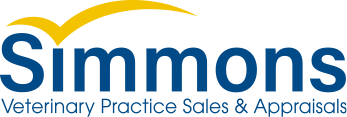It is that time of year when many people assess their personal and professional lives and expectations, set goals for the future, and decide what to focus on to be healthy, happy, and successful in the year ahead.
Just like you do with your personal health, you should conduct periodic examinations as an owner or manager of a veterinary practice. Is the business operating to its maximum potential? Is it serving the community and clientele to the best of its ability? Is it profiting well above the level to cover all true operating expenses?
To answer these questions, let’s examine what you should be seeing in a well-managed small animal practice in the Southeast. Of course, these statistics will vary depending on your location.
The Three Major Expenses in Veterinary Practice Management
There are three major expenses that can heavily affect your veterinary practice’s financial health. Keeping your eyes on the following three costs will help you keep a pulse on your finances.
COGS/Supplies
In days gone by, the ideal percentage for supply costs hovered around 20% but not today. In the Southeast, it seems that the general range is now around 25%. Significant excess can be because of poor management and overstock, insufficient markup, or possible theft.
Rent
Although the landlord and practice owner are often the same person, the business must pay the landlord, so the practice should have “fair market rent.” This rate can be determined by a local market analysis of rent per square foot or by looking at the return on investment for the landlord. A reasonable return on investment in this economy is 8% to 11% of the real estate value. Regardless of the ROI, the rent expense ideally should not exceed 5% of gross revenues.
Additionally, the real estate value should not exceed gross revenues. If rent is too high, there comes a point when the tenant cannot afford the rent, and the expense eventually becomes inordinate for the practice size, resulting in a negative effect on profit. Realistically, the only remedy in this situation is to increase revenues since the value of the real estate is relatively stable.
Support Staff
The problems we notice with low-profit practices are either low support staff expenses forcing doctors to perform staff duties or practices that are over-staffed with ineffective operating procedures. These are big mistakes if your goal is to maximize profit. Reasonable support staff wages typically hover around 20%; though in higher quality practices, we see around 25%.
Production Costs that Impact Vet Practice Financial Health
There are a few production costs and metrics you want to analyze periodically to determine your practice’s financial performance.
Average Transaction Charge (ATC)
Although it’s location, practice, and culture dependent, a reasonable target should exceed $150. This will be considerably greater in metropolitan areas.
Average Daily Transactions
A small animal practice with about 85% doctor production and no after-hours calls should be able to see about 25–30 transactions daily per full-time doctor.
Doctor Production
Again, doctor production is also location, practice, and culture dependent; however, in our experience, we’ve seen that most experienced doctors are easily able to exceed $500K in annual production. It is not uncommon for this figure to exceed $1M in a fine-tuned practice.
Profit/Earnings
Profit is the figure remaining from revenues after all real and necessary operating expenses are met, including a fair market rent and salary for the Medical Director. In today’s world, a small animal practice rarely produces profit until revenues well exceed $500K.
There is a threshold of expenses to be met before profit appears on the bottom line. Although 15% to 20% is a healthy target, this is not typically reached until revenues exceed $1M. Profit or earnings are your “EBIDTA” (Earnings Before Interest, Depreciation, Income Taxes, and Amortization).
Cash Flow
Many accountants and practice appraisers distinguish between EBIDTA and Adjusted Net Cash Flow. This is the figure available for the owner to pull from the practice for personal discretionary use. We like to see this hovering around 30% of gross in a well-managed practice.
Operating Expenses
The typical small animal practice will operate on about 80% to 85% of gross after all necessary expenses, including supplies, staffing, and rent.
Questions to Ask Yourself about Your Veterinary Practice’s Financials
- How is revenue trending? If it’s growing, is it due to fee increases, transaction increases, diagnostic workups, or other reasons?
- Are you retaining clients and obtaining new clients?
- Have you identified and eliminated personal and/or one-time expenditures? Considering that a general small animal practice will typically appraise and sell for 4–6x your EBIDTA, 4–6 dollars are lost in practice value for every dollar spent to avoid taxes.
- Is your doctor coverage sufficient? Having a part-time associate on a consistent basis will be more beneficial than utilizing occasional relief doctors. Preferably, you should pay associate doctors on production rather than a flat salary or daily rate. This will motivate higher production.
Trust the Expert Appraisers at Simmons Inc. to Evaluate Your Practice’s Financial Health
Although this is not intended to provide a full management course, these are examples of easily identifiable indexes that could have a tremendous effect on your vet practice’s financial health.
The best way to know how your practice truly performs is to have a formal practice valuation by a veterinary-specific practice appraiser—someone who is not only aware of veterinary practice management benchmarks but who is also involved in practice transitions, helping sellers sell and buyers buy. An appraiser with transactional experience, like the ones at Simmons, should be able to provide a full-scope examination of not just the profitability but salability of your practice. Learn more about the different KPIs you can focus on to boost your practice’s financial health.



